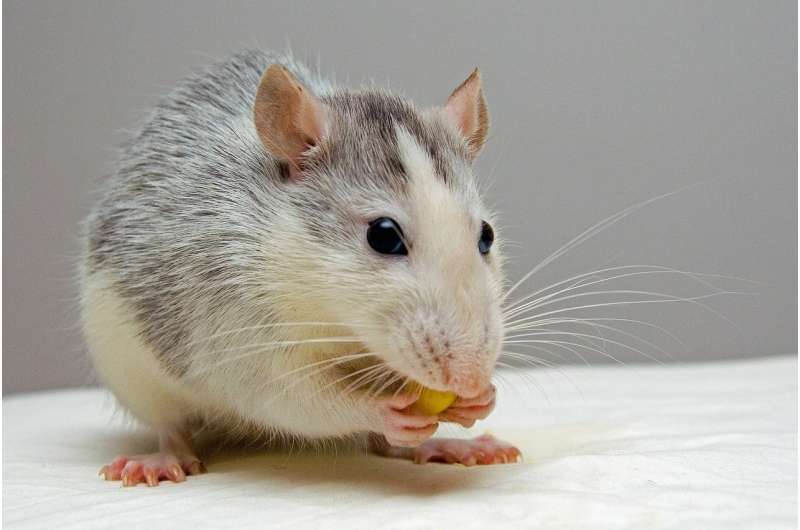October 17, 2018 report
Study shows city rats eat better than country rats

A pair of researchers, one with Trent University in Canada, the other the University of Manchester in the U.K. has found evidence that rats living in cities have a much richer diet than rats living in the country. In their paper published in Proceedings of the Royal Society B, Eric Guiry and Michael Buckley describe their isotopic analysis of rats living in Toronto during the years 1790 to 1890, and what they found.
It is commonly believed that rats living in cities have it better than rats living in the country. Besides having access to more food sources, city rats rarely have to share those sources with other animals. They also have access to better shelter from the elements. Guiry and Buckley note that despite their long history living with rats, people still do not know all that much about them and how they actually live. To learn more, they embarked on a study that covered a 100-year period and included rats from a host of sites in and around the city of Toronto, Ontario.
The researchers gained access to samples of rats from museums, universities and other archaeologists working around Toronto. They first conducted a molecular study of the rats, discarding any that were not of the species they were after: Rattus norvegicus. They used stable carbon and nitrogen isotope analyses to study proteins found in the rat bones. Doing so gave them an accurate representation of what the rats were eating as they scurried around in 19th-century Canada.
The researchers discovered that the rats that lived in the cities had a homogenous, stable diet compared to country rats. They found it did not really matter which part of the city, either—rats in the city ate very well. They also ate a lot of meat. In sharp contrast, rats that lived a rural existence tended to have a more limited diet—one that included little to no meat. Guiry and Buckley suggest that part of the problem for rats in the country is that they have to compete for food with raccoons and other foraging animals.
The researchers are hoping that their study will offer more data for other researchers looking into controlling rat populations in urban areas.
More information: E. Guiry et al. Urban rats have less variable, higher protein diets, Proceedings of the Royal Society B: Biological Sciences (2018). DOI: 10.1098/rspb.2018.1441
Abstract
Over the past 1000 years, rats (Rattus spp.) have become one of the most successful and prolific pests in human society. Despite their cosmopolitan distribution across six continents and ubiquity throughout the world's cities, rat urban ecology remains poorly understood. We investigate the role of human foods in brown rat (Rattus norvegicus) diets in urban and rural areas over a 100 year period (ca AD 1790–1890) in Toronto, Canada using stable carbon (δ13C) and nitrogen (δ15N) isotope analyses of archaeological remains. We found that rat diets from urban sites were of higher quality and were more homogeneous and stable over time. By contrast, in rural areas, they show a wide range of dietary niche specializations that directly overlap, and probably competed, with native omnivorous and herbivorous species. These results demonstrate a link between rodent diets and human population density, providing, to our knowledge, the first long-term dietary perspective on the relative value of different types of human settlements as rodent habitat. This study highlights the potential of using the historical and archaeological record to provide a retrospective on the urban ecology of commensal and synanthropic animals that could be useful for improving animal management and conservation strategies in urban areas.
Journal information: Proceedings of the Royal Society B
© 2018 Phys.org



















